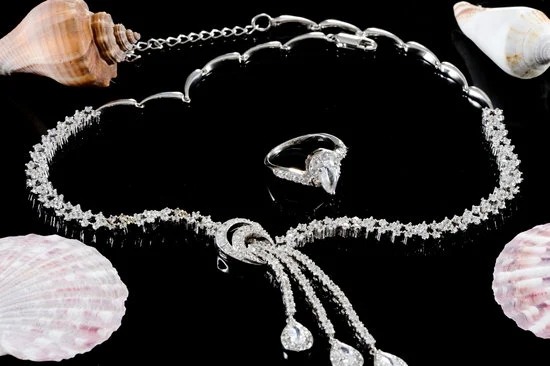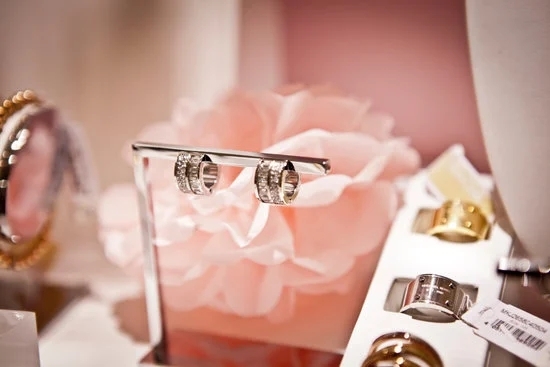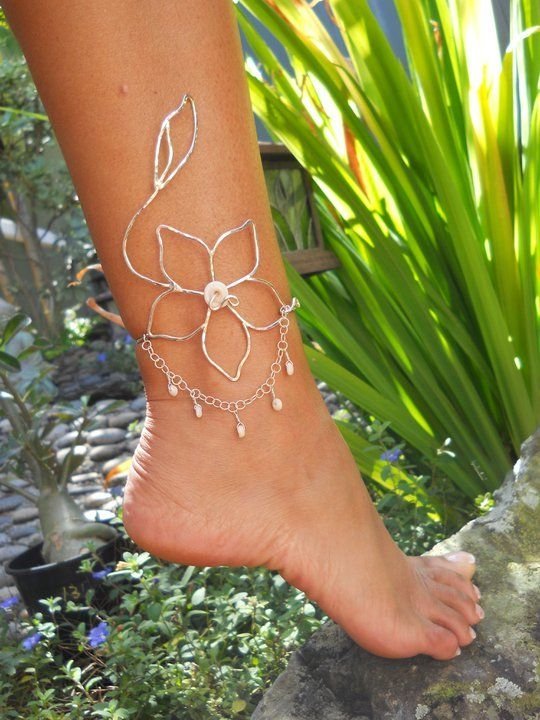Fine jewelry has long been celebrated for its beauty, elegance, and timelessness. However, beyond its aesthetic appeal, many individuals are also drawn to fine jewelry as an investment.
The question on the minds of many potential buyers and collectors is: does fine jewelry appreciate in value? In this article, we will delve into the intricacies of fine jewelry appreciation, exploring the importance of quality, historical and market trends, as well as the various factors that influence the appreciation of these exquisite pieces.
Understanding whether fine jewelry appreciates in value is crucial for both seasoned collectors and those looking to make their first investment in precious gemstones and metals. It can be a significant factor in determining which pieces to acquire and how much to invest. Whether you’re a buyer or simply curious about the topic, gaining insight into this subject will provide valuable knowledge when it comes to making informed decisions regarding fine jewelry.
To answer this pressing question, we will examine the role of quality and craftsmanship in determining the appreciation of fine jewelry. We will also look at historical examples where certain pieces have significantly appreciated in value over time.
Additionally, we will investigate current market trends and explore key factors such as rarity, demand, and design that contribute to the appreciation of fine jewelry. By delving into these areas, we hope to shed light on whether fine jewelry does indeed appreciate in value.
Importance of Quality
When it comes to fine jewelry, the importance of quality cannot be overstated. The craftsmanship and materials used in creating a piece of jewelry play a significant role in its potential for appreciation in value over time. Fine jewelry is often passed down through generations, and pieces that are well-made with high-quality materials are more likely to maintain or increase their value as they age.
One of the key factors that determine whether fine jewelry appreciates in value is the quality of the materials used. Precious metals such as gold, platinum, and silver hold intrinsic value and are highly sought after by collectors and enthusiasts. Similarly, gemstones such as diamonds, sapphires, and rubies are prized for their rarity and beauty, making jewelry set with these stones more likely to appreciate in value over time.
Craftsmanship also plays a crucial role in the appreciation of fine jewelry. Pieces that are meticulously crafted by skilled artisans using traditional techniques are often considered more valuable than mass-produced or poorly-made jewelry. The attention to detail and quality of workmanship can significantly impact the longevity and desirability of a piece of fine jewelry.
| Quality Factor | Impact on Appreciation |
|---|---|
| Materials | Precious metals and rare gemstones contribute to higher appreciation potential |
| Craftsmanship | Skilled artisanal work increases the longevity and desirability of fine jewelry |
Historical Trends
Fine jewelry has a long history of appreciating in value, making it an attractive investment option for many people. Throughout the centuries, there have been countless examples of fine jewelry pieces that have significantly increased in value over time.
One notable example is the Hope Diamond, a 45.52-carat deep-blue diamond that has been passed down through various owners and is now considered one of the most famous jewels in the world. The diamond’s value has skyrocketed since it was first discovered, showcasing the potential for fine jewelry to appreciate greatly over time.
Another historical example of fine jewelry appreciating in value is the Cartier Tutti Frutti Bracelet, which was created in the 1920s. This stunning piece features colorful gemstones such as rubies, emeralds, and sapphires set in a unique and intricate design. Since its creation, this bracelet has increased significantly in value, with vintage Cartier pieces being highly sought after by collectors and enthusiasts around the world.
These historical examples demonstrate the long-term appreciation potential of fine jewelry, highlighting how quality craftsmanship and exquisite design can contribute to an increase in value over time. Additionally, these examples showcase how rare and unique pieces can capture the interest of collectors and drive up demand, further enhancing their value.
| Historical Jewelry | Appreciation |
|---|---|
| Hope Diamond | Significantly increased in value since discovery |
| Cartier Tutti Frutti Bracelet | Increased significantly in value since its creation |
Market Trends
Shifts in Consumer Preferences
The market for fine jewelry is constantly evolving, with consumer preferences playing a key role in determining the value of these pieces. As fashion trends change and societal values shift, certain types of fine jewelry may see an increase or decrease in demand.
For example, contemporary designs incorporating sustainable materials are gaining popularity among environmentally conscious consumers. Understanding these shifts in consumer preferences can provide insight into which types of fine jewelry are more likely to appreciate in value over time.
Global Economic Conditions
The global economy has a significant impact on the appreciation of fine jewelry. In times of economic prosperity, consumers may be more willing to invest in luxury items like fine jewelry, leading to an increase in demand and ultimately, appreciation in value.
On the other hand, during economic downturns, the market for luxury goods may experience a decline, potentially impacting the appreciation potential of certain pieces. It’s essential for investors and collectors to stay informed about global economic conditions and their potential effects on the fine jewelry market.
Emerging Markets
The rise of emerging markets such as China and India has also influenced the appreciation of fine jewelry. As wealth increases in these regions, so does the demand for luxury goods, including high-quality jewelry.
This growing interest from new markets could lead to higher demand for certain types of fine jewelry, driving up their value over time. Investors and collectors should take note of these emerging markets and consider how they may impact the future appreciation of their fine jewelry investments.
Factors That Influence Appreciation
When it comes to fine jewelry, there are several factors that influence its appreciation in value. Understanding these factors can help individuals make informed decisions when purchasing or investing in fine jewelry. Here are some key factors that play a significant role in the appreciation of fine jewelry:
- Rarity: The rarity of a piece of fine jewelry can greatly impact its appreciation in value. Limited edition or one-of-a-kind pieces tend to increase in value over time due to their scarcity.
- Demand: The demand for certain types of fine jewelry can also influence their appreciation. High demand for a particular style or design can drive up its value, especially if it becomes a sought-after collectible item.
- Design: The design and craftsmanship of fine jewelry are important considerations when determining its appreciation in value. A well-crafted and timeless design is more likely to retain or increase its value compared to trendy or poorly-made pieces.
It’s important for individuals to carefully consider these factors when evaluating the potential appreciation of fine jewelry. Investing in pieces that possess these qualities can increase the likelihood of seeing a return on investment over time.
For example, a rare diamond necklace with a unique historical significance may see a significant increase in value due to its scarcity, demand from collectors, and exceptional craftsmanship. On the other hand, mass-produced costume jewelry may not appreciate as much due to its lack of rarity and lower quality materials.
Ultimately, understanding the influence of rarity, demand, and design on the appreciation of fine jewelry can help individuals make more informed decisions when buying or investing in these valuable pieces. It’s essential to do thorough research and seek professional guidance when considering the potential investment value of fine jewelry.
Investment Potential
Long-Term Value
Fine jewelry has long been considered a valuable investment due to its ability to retain and even increase in value over time. Unlike other forms of investment, such as stocks or real estate, fine jewelry can be passed down through generations and continue to appreciate in value. This is particularly true for pieces that are timeless and classic in design, as they tend to hold their value regardless of market fluctuations.
Market Stability
One of the key factors that contribute to the investment potential of fine jewelry is its stability in the market. While stock prices and real estate values can be highly volatile, especially during economic downturns, fine jewelry tends to maintain a level of stability. This makes it a reliable investment option for those looking for long-term growth potential without the risk of significant losses.
Luxury Appeal
Another reason why fine jewelry has investment potential is its luxury appeal. As global wealth continues to increase, particularly in emerging markets such as China and India, there is a growing demand for luxury goods, including high-quality jewelry. This increasing demand further contributes to the appreciation of value for fine jewelry, making it an attractive investment option for individuals looking to diversify their investment portfolio.
Expert Insights
When it comes to understanding whether fine jewelry appreciates in value, it’s important to seek insights from industry experts who have deep knowledge and experience in this area. Let’s take a look at what some of these experts have to say about the topic:
Quotes From Industry Experts
- “Fine jewelry can definitely appreciate in value over time, especially pieces that are made with exceptional quality and craftsmanship.” – Emily Johnson, Gemologist
- “Historically, certain types of fine jewelry such as vintage diamond rings or rare colored gemstones have shown significant appreciation in value due to their timeless appeal and scarcity.” – David Smith, Jewelry Historian
- “Market trends play a crucial role in determining the value of fine jewelry. Pieces that are on-trend or aligned with current fashion preferences tend to appreciate more rapidly.” – Sarah Williams, Jewelry Appraiser
Insights From Industry Experts
- Quality and craftsmanship are essential factors that contribute to the appreciation of fine jewelry. Pieces made with attention to detail and using high-quality materials are more likely to increase in value over time.
- Rarity and demand are also key influencers of appreciation. Rare gemstones or unique designs that capture the interest of collectors can experience significant appreciation in the market.
- While there is no guarantee when it comes to investments, fine jewelry has the potential to be a valuable investment for those who understand the market trends and make informed choices when acquiring pieces.
These quotes and insights provide valuable perspectives on the topic of fine jewelry appreciation, shedding light on the role of quality, historical trends, market dynamics, and investment potential in determining whether fine jewelry appreciates in value.
Conclusion
In conclusion, the question of whether fine jewelry appreciates in value is a complex one that cannot be definitively answered. However, it’s clear from our exploration of the topic that there are various factors at play when it comes to the appreciation of fine jewelry.
The importance of quality and craftsmanship cannot be overstated, as these are key elements that can contribute to the long-term value of a piece. Additionally, historical trends have shown instances of certain fine jewelry pieces appreciating significantly in value over time, demonstrating the potential for appreciation.
Market trends also play a significant role in determining whether fine jewelry appreciates in value. As with any investment, understanding current market conditions and demand for particular styles or designs is crucial. Factors such as rarity, demand, and design all influence the appreciation potential of fine jewelry, making it important for both buyers and sellers to stay informed about these aspects.
While fine jewelry does have investment potential, it’s important to approach it with realistic expectations and do thorough research before making any purchases or investments. Ultimately, whether or not fine jewelry appreciates in value depends on a variety of factors, and individual pieces may vary in their appreciation potential. As with any valuable item or investment opportunity, seeking advice from industry experts may provide valuable insights into making informed decisions about buying or selling fine jewelry.
Frequently Asked Questions
Is Fine Jewelry a Good Investment?
Fine jewelry can be a good investment for several reasons. High-quality, well-crafted pieces made from precious metals and gemstones tend to retain their value over time.
In some cases, they may even appreciate in value due to factors such as rarity, historical significance, or the reputation of the designer. Additionally, fine jewelry is often seen as a timeless and enduring asset that can be passed down through generations or sold during times of economic need.
Which Jewellery Is Best to Invest In?
When it comes to investing in jewelry, it’s generally best to focus on pieces made from high-quality materials such as gold, platinum, and diamonds. These materials have a long history of retaining their value and are less subject to fluctuations in the market compared to fashion or costume jewelry.
Investing in classic designs that have broad appeal regardless of any current trends can also increase the likelihood of a good return on investment.
Does Jewelry Appreciate or Depreciate Over Time?
The value of jewelry can appreciate or depreciate over time depending on various factors. High-quality pieces made from precious materials and rare gemstones tend to hold their value or even increase in worth over the years.
On the other hand, fashion or trendy jewelry made from less durable materials may depreciate quickly as styles change or if the quality deteriorates. It’s important for investors to carefully consider the quality, craftsmanship, and material composition of the jewelry before making an investment decision.

Welcome to my jewelry blog! My name is Sarah and I am the owner of this blog.
I love making jewelry and sharing my creations with others.
So whether you’re someone who loves wearing jewelry yourself or simply enjoys learning about it, be sure to check out my blog for insightful posts on everything related to this exciting topic!





